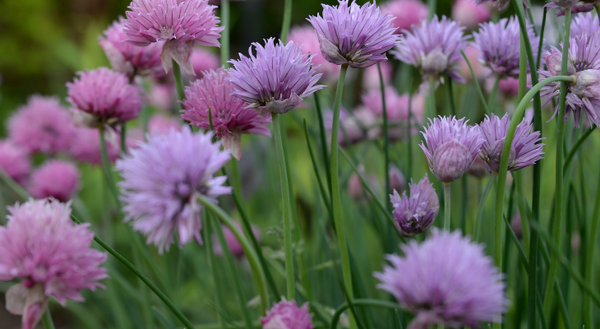
Growing up, a summer meal at grandma and grandpa’s house wasn’t complete without a giant, juicy tomato and fried squash blossoms. Squash blossoms are one example of edible flowers that are already growing in our gardens and just waiting for us to enjoy. Edible flowers can be added as the main ingredient in a new recipe, offer a little spice to a dish, or even used as a garnish to add some color and texture to a plate.
Proper identification is important when eating any flower or plant. Even if the flower is edible, it may not be tasty. Even worse, the plant (or certain parts) could possibly be poisonous. Grow your own edible flowers from seed or check out your local farmers market or the produce section at the grocery store for flowers specifically grown as a food crop.
Harvest edible flowers in the early morning when blooms have just opened. Avoid unopened flowers or those wilting. For most flowers, you will typically only eat the petals; remove all other parts and immediately place them in a cool location upon harvest to avoid wilting before using.
A few words of caution, make sure any flowers you plan to eat are chemical-free, and avoid eating edible flowers if you have allergies since there may be some residual pollen. Also, keep in mind that different cultivars of plants may taste different, and even different growing locations may affect the flavor of a flower.
When adding flowers to a recipe, try to match the flavor of the flower to the recipe. Add them to your recipe or plate just before serving for the best results.
- Nasturtium (Tropaeolum majus) - Add a peppery bite and pop of color to fresh salads with this annual plant that grows best in full sun.
- Chives (Allium schoenoprasum) - Enhance soups, salads, or vegetables by adding some onion flavor with sprinkles of chive flowers. These are clump-forming perennials for a full sun area.
- Borage (Borago officinalis) - Their star-shaped blue flowers with a cucumber flavor would make a beautiful garnish to a summer salad plate. Borage is full-sun loving annual, but will self-seed year after year.
- Squash (Cucurbita sp.) - Stuff these with meat or cheese, batter and fry them, and enjoy! Harvest the male flowers (stem is thin) leaving a few for pollination. (Grandma’s secret recipe was fried pumpkin blossoms served on sliced bread!)
Edible flowers can offer beautiful and unique textures, color, and taste to your next plate. Other flowers to consider are calendula, pansy, rose, lavender, and daylily. Bon appétit!
PHOTO CREDIT: Chive flowers - Photo by Laura Ockel on Unsplash
ABOUT THE AUTHOR: Brittnay Haag is a Horticulture Educator with University of Illinois Extension, serving Livingston, McLean, and Woodford Counties. Her work focuses on youth horticulture education, specifically through school gardens and Jr. Master Gardener programs. Brittnay provides leadership for three county Master Gardener programs, and is responsible for developing community programs and providing expertise in horticulture and environmental sciences.